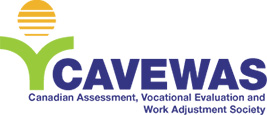Hello Steven,
Thank you for this excellent question. To my knowledge, the DOT itself does not use the categories of unskilled, semi-skilled and skilled to classify occupations. These terms are used by the social security administration. According to SSA, skilled occupations are SVP 5 and above. Look at section 75 in the following document: https://secure.ssa.gov/poms.nsf/lnx/0425001001. Here is how the SSA uses these SVP ratings to determine skill level:
Jobs with SVP ratings of 1 or 2 are considered unskilled.
Jobs with SVP ratings of 3 or 4 are considered semi-skilled.
Jobs with SVPs greater than 4 are skilled.
Education can substitute for job training. For example, SSA considers that a four-year college degree is the equivalent of two years of SVP, and every year of graduate school is an additional one year of SVP.
In Canada the National Occupational Classification (NOC) does not use SVP to classify occupations, as was previously done in the CCDO (Canadian Classification and Dictionary of Occupations) and does not use the unskilled, semi-skilled and skilled categorization (which until last year was used by Immigration Canada). The NOC 2021 instead uses a new six-category system representing the level of Training, Education, Experience and Responsibilities (TEER) required for entry in an occupation. The TEER classification has also been adopted by Immigration Canada.
I agree that adjusting the SVP requirement may be helpful to generate more potential occupations in a TSA but ultimately, a careful review of the skills, education, aptitudes, physical/cognitive demands of occupations is necessary to ensure they are appropriate matches. Also, I would add that I disagree with SSA’s contention that unskilled occupations do not provide transferable skills. In the NOC, occupations that would be classified as unskilled by the SSA still provide transferable skills and knowledge. For example, a hand packager (920.587-018) is considered at SVP 2. Its equivalent in the NOC would be Material Handler with corresponding transferable skills and knowledge.
